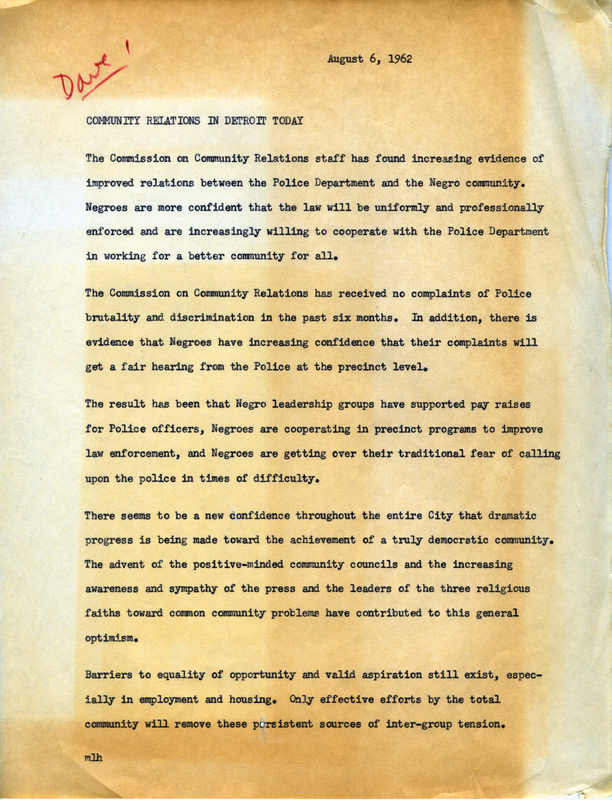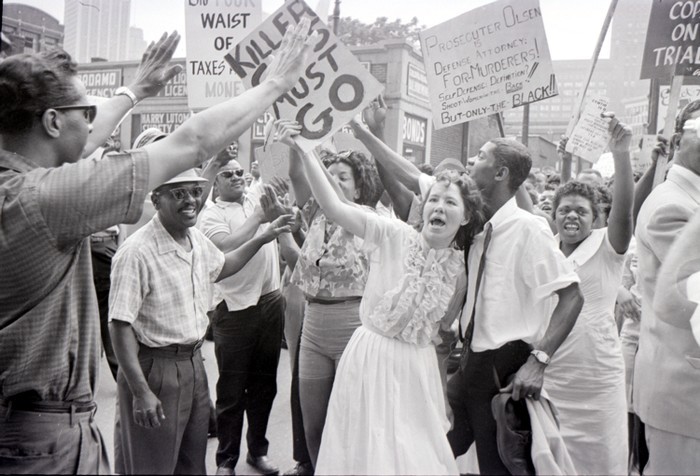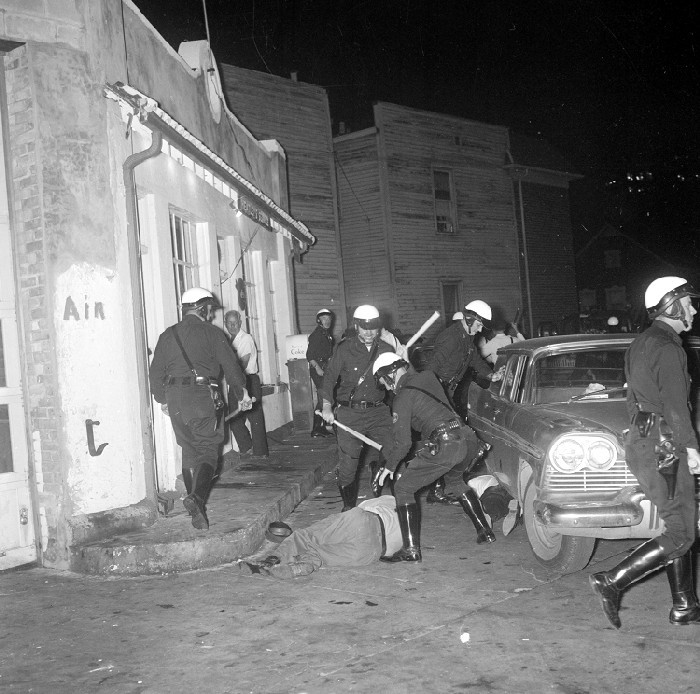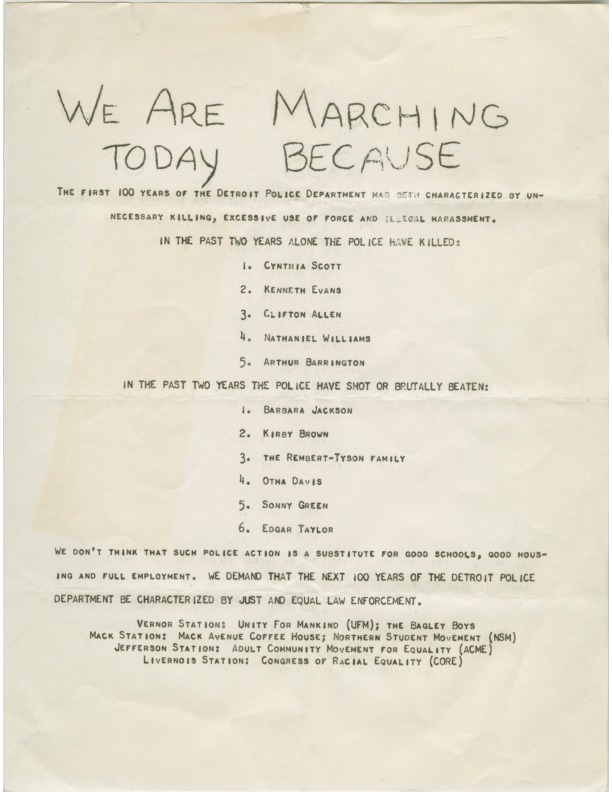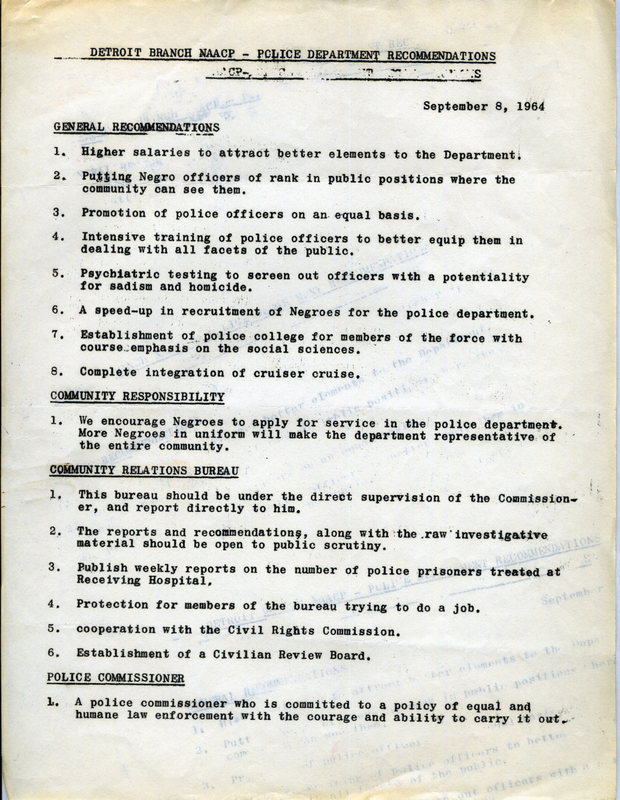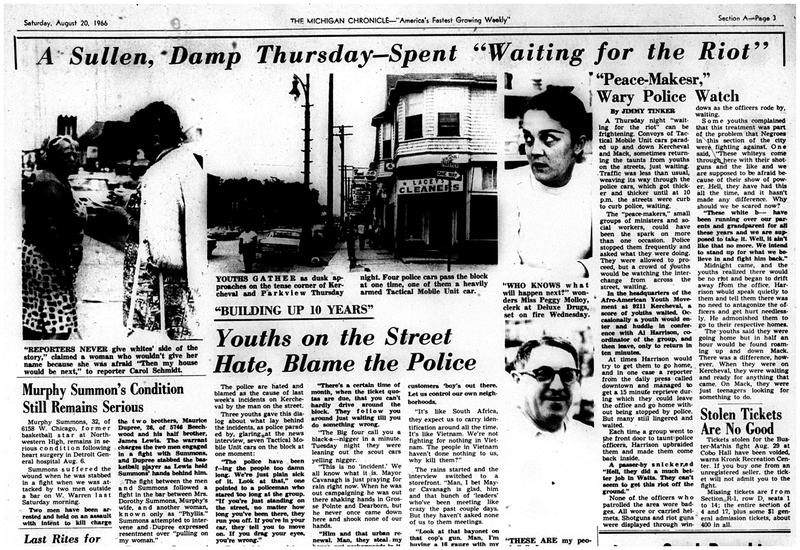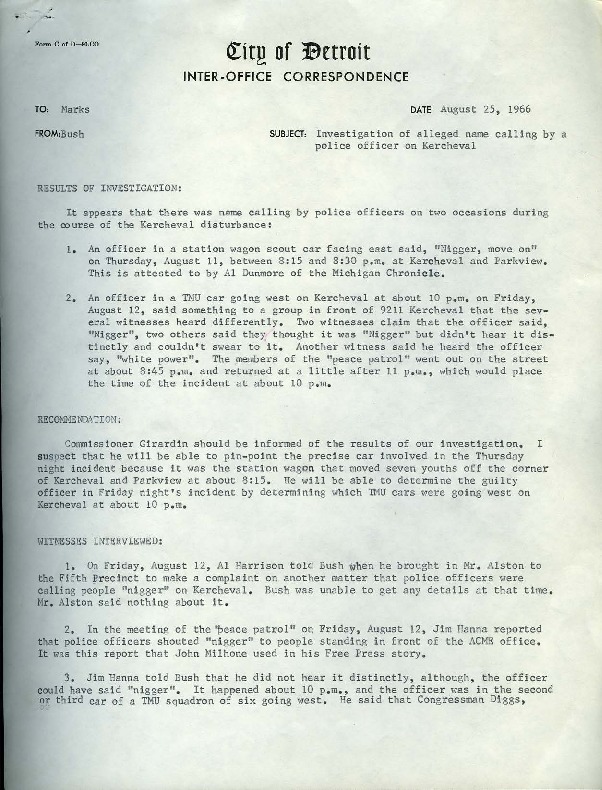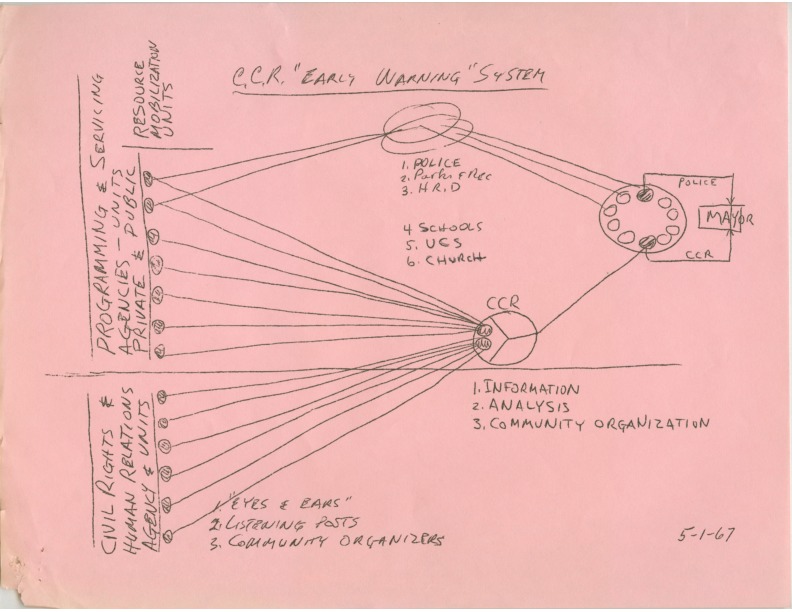Escalation and Confrontation
Longstanding racial tensions and ongoing resentment about housing and economic discrimination provoked violent confrontations between Black residents and the Detroit Police Department. The number and severity of demonstrations and disturbances increased in the early 1960s, including notable clashes on Belle Isle and Kercheval Street in 1965 and 1966. Witnessing the growing animosity, in the fall of 1966 and spring of 1967 community leaders and the Detroit Commission on Community Relations warned that the city was in danger of experiencing a widespread violent rebellion.
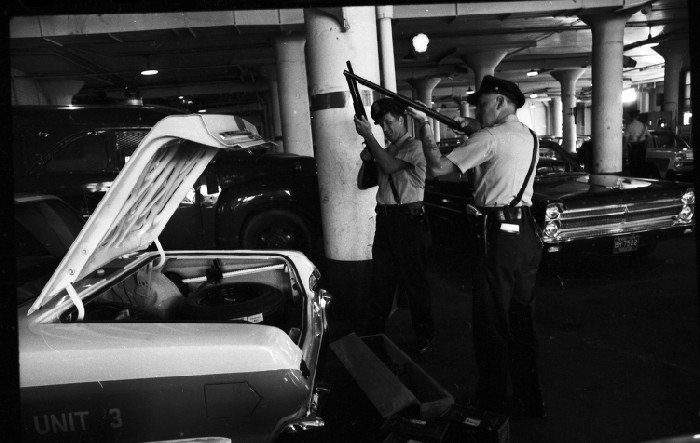
Detroit Police Department Tactical Mobile Unit being dispatched to Belle Isle. July 1, 1965. From the Detroit News Photograph Collection.
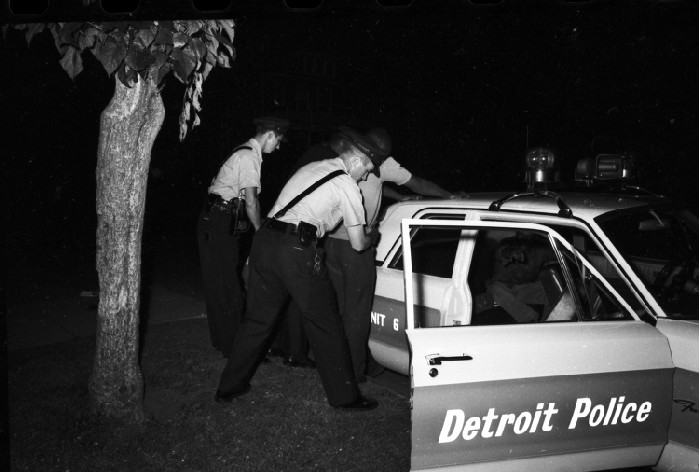
Uniformed police officers "pat down" a man leaned up against a police car at Belle Isle in Detroit, Michigan. Jly 1, 1965. From the Detroit News Photograph Collection.
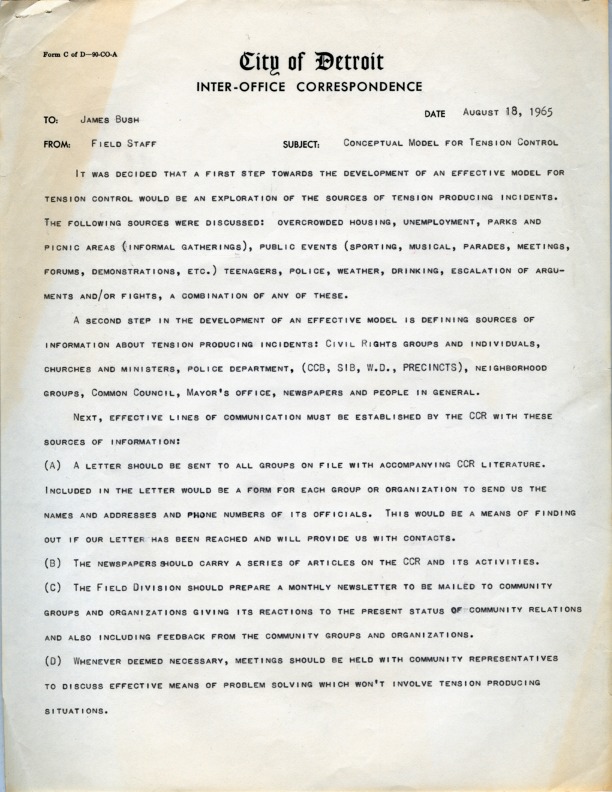
A memo from the Detroit Commission on Community Relations field staff to James Bush identifies sources of community tension, including, "overcrowded housing, unemployment, parks and picnic areas (informal gatherings), public events (sporting, musical, parades, meetings, forums, demonstrations, etc.), teenagers, police, weather, drinking, escalation of arguments, and/or fights, a combination of any of these." August 18, 1965. Detroit Commission on Community Relations (DCCR)/Human Rights Department Records, Part 3, Box 71.
Why do you think the author of this memo used the term “tension control” instead of “racial tension” or something similar?
![Progress Report on [Police] Recruiting Progress Report on [Police] Recruiting](https://projects.lib.wayne.edu/12thstreetdetroit/files/fullsize/42a904624f5abdb8ffcd56430caa3722.jpg)
The Detroit Commission on Community Relations Subcommittee on Police-Community Relations provides an overview of Detroit Police Department recruitment reforms, including "correcting the imbalance of Negro representation on in the department." October 10, 1966. Detroit Commission on Community Relations/Human Rights Department Records, Part 3, Box 68, Folder 20. Click the image to read the full document.
Police and area residents clashed on Kercheval Street in Detroit’s East Side on August 9, 1966. White police officers harassed Black youth on the street, provoking a short uprising extending into the early hours of the next day. The poverty that characterized the area, coupled with a growing militancy among mostly Black youth, served as a backdrop to the confrontation.
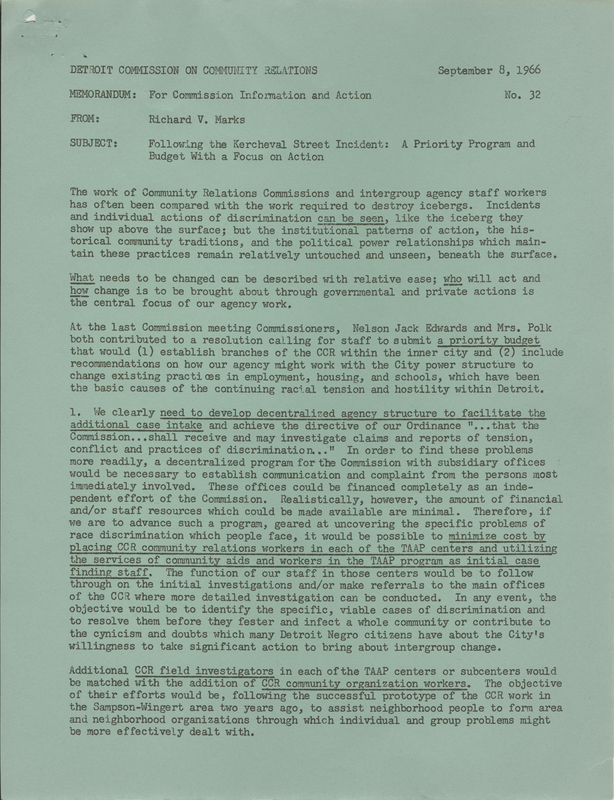
A Detroit Commission on Community Relations proposal for a priority program and budget to effect institutional change within the Commission and the City of Detroit following an August 9, 1966 confrontation between Black residents and police on Kercheval Street. Richard Marks likens the work of the DCCR to destroying iceburgs, explaining that, "Incidents and individual actions of discrimination can be seen, like the iceburg they show up above the surface; but the institutional patterns of action, the historical community traditions, and the political power relationships which maintain these practices remain relatively untouched and unseen, beneath the surface." September 8, 1966. Detroit Commission on Community Relations (DCCR)/Human Rights Department Records, Part 3, Box 71, Folder 9.
What “institutional patterns of action,” “historical community traditions,” and “political power relationships” have you seen in this exhibit that encouraged racial conflict?
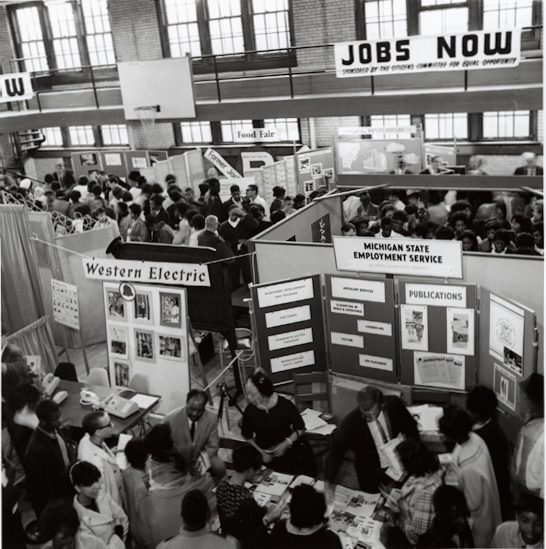
Sponsored by the Citizens Committee for Equal Opportunity and the Virginia Park Citizens Committee, a jobs fair, called the “Jobs Now! Conference,” is held at Hutchins Junior High School, near the place where Detroit’s Civil Unrest will erupt exactly two months later. The jobs fair organizers described the neighborhood as being one of Detroit’s “areas of most critical unemployment.” May 23, 1967. Source: Wayne State University Office of Religious Affairs, Box 18.

